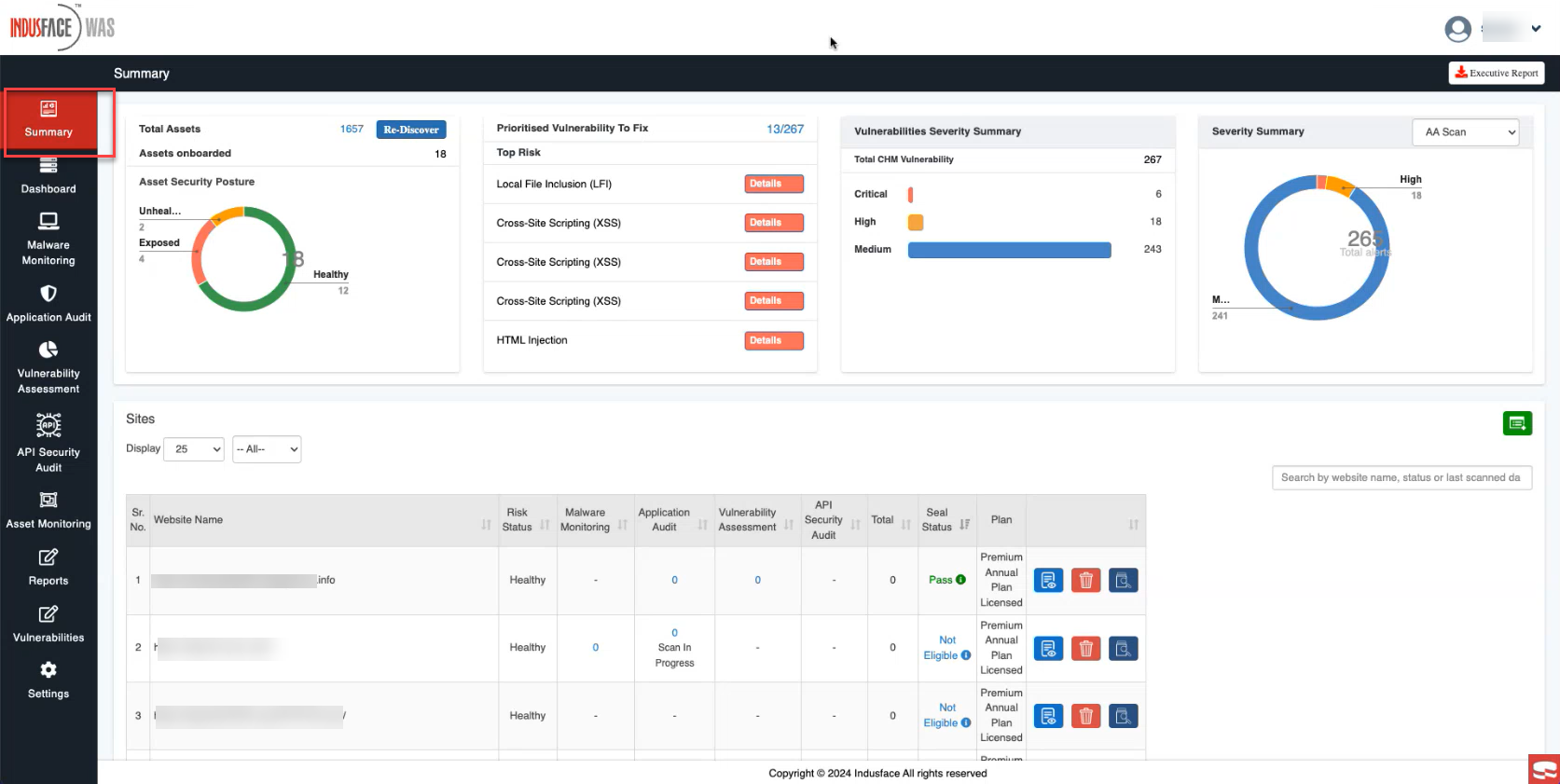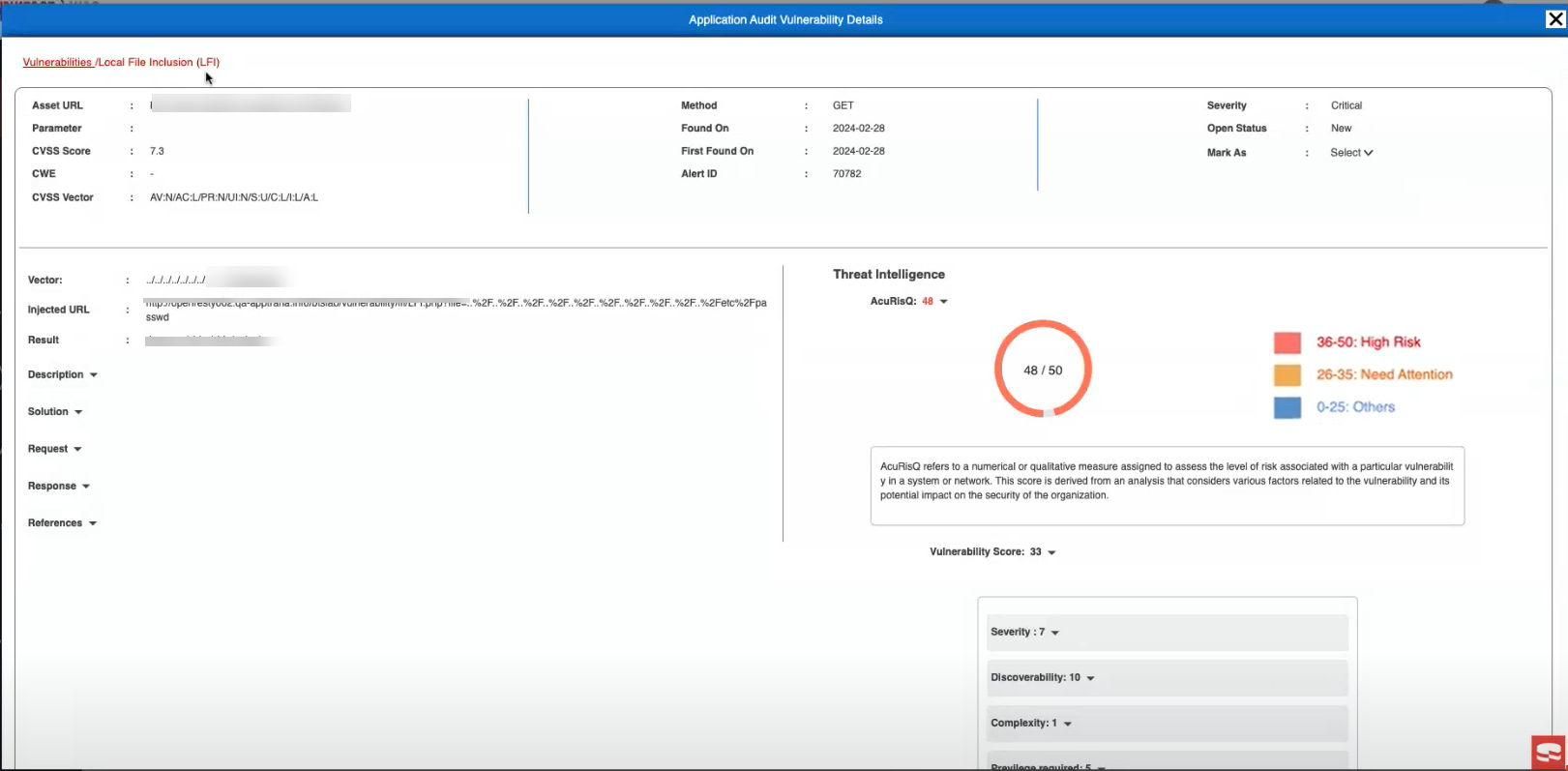Leveraging Risk-Based Vulnerability Management with AcuRisQ
Maintaining an inventory of assets (websites, APIs and other applications) is a good start. However, when each of these websites have tens of open vulnerabilities, the sheer volume overwhelms you, leading to alert fatigue.
Then, how do you decide where to begin?
Enter Indusface AcuRisQ, the solution to your prioritization dilemma.
AcuRisQ – Quantify Risk Accurately
Indusface WAS now includes an accurate risk-scoring mechanism to evaluate and quantify the risk of vulnerabilities across your organization’s websites and APIs.
By considering various factors such as business units, asset criticality, severity of vulnerabilities, and more, AcuRisQ provides a comprehensive risk assessment tailored to your organization’s unique needs.
This feature enables you to efficiently identify and address the most vulnerable apps in your infrastructure.
It quantifies and presents all necessary risk-based metrics on a single screen.

With AcuRisQ, you’ll be able to:
- Identify the prioritized list of vulnerabilities so that you fix the most critical apps first
- Reduce alert fatigue and significantly enhance security posture
- Visualise the actual risk through a metric based on multiple parameters such as exploitability of the vulnerability, the criticality of assets, the severity of vulnerabilities, and many more.
- Comply with security audits faster by fixing the most critical vulnerabilities first
Why Do We Need a Shift from CVSS-Specific Vulnerability Assessment?
CVSS alone is insufficient for effective vulnerability management. Despite being widely used, its static scoring system lacks the contextual risk factors crucial for individual environments.
CVSS can’t prioritize organization-specific dangers, as its assessment is standard, neglecting the unique nature of each business.
For instance, despite no known exploits, CVSS gives a high score of 9.1 to CVE-2020-13112 (Amazon Linux Advisory AL2012-2020-320 for libexif).
Meanwhile, CVE-2021-36942 (Windows LSA Spoofing Vulnerability) has a lower NVD rating of 5.3 but is actively exploited by malware groups, posing a significant threat with exploit code.
Depending solely on the CVSS score patch prioritization falls short. Organizations should instead adopt a risk-based approach, factoring in asset criticality, attacker activity, and vulnerability severity.
Risk-based Vulnerability Assessment with AcuRisQ
Generating an accurate risk profile for any CVE (Common Vulnerabilities and Exposures) entails evaluating multiple factors.
Indusface WAS AcuRisQ uses the Vulnerability Score and Heatmap Score to quantify vulnerability risks accurately, going beyond the technical severity defined by the CVSS rating system.
- Vulnerability Score integrates severity, discoverability, complexity, privilege required, and ethical hacker scores.
- Heatmap Score calculates the overall score by considering linked assets, criticality, and weight factors.
AcuRisQ provides transparent insights into these risk scores, offering a detailed breakdown that enhances user understanding of vulnerability severity.

Prioritize Vulnerability Remediation in 3 Steps
With AcuRisQ, organizations can follow a structured approach to vulnerability management.
- Discover and map all assets across your attack surface. Gain comprehensive visibility into your computing environments, allowing you to understand the state of each asset, categorized as Healthy, Unhealthy, or Exposed.

2. Evaluate the threat context, vulnerability severity, and criticality of each asset with ease. AcuRisQ provides insights into risk scores, total vulnerability counts, and security seal statuses associated with each asset, empowering you to make informed decisions.

- Prioritize vulnerability remediation effectively based on identified risk metrics. Identify high-risk vulnerabilities and apply appropriate remediation or mitigation techniques promptly.
By focusing on critical issues first, you can strengthen your security and mitigate potential cyber threats confidently.
Stay tuned for more relevant and interesting security articles. Follow Indusface on Facebook, Twitter, and LinkedIn.


 April 19, 2024
April 19, 2024



